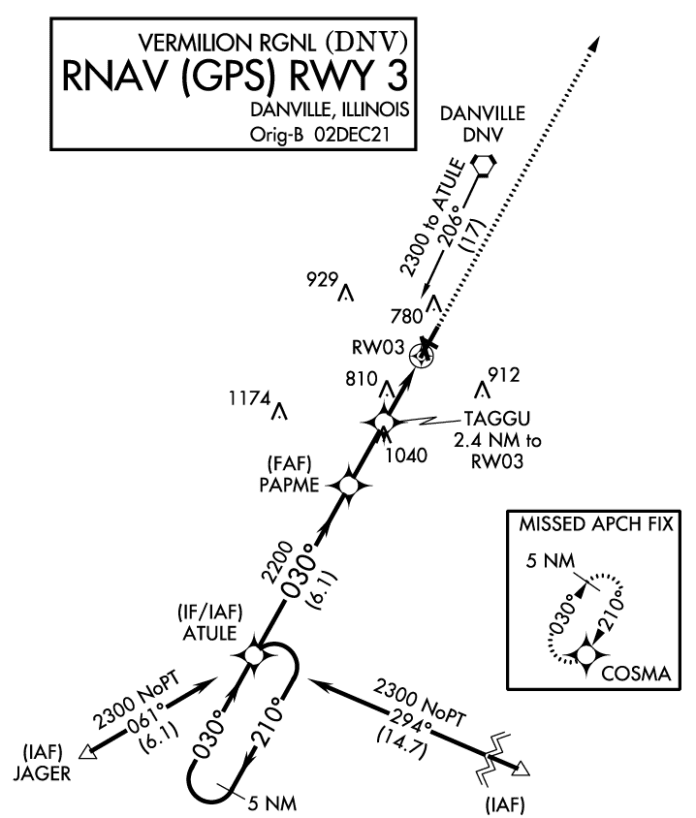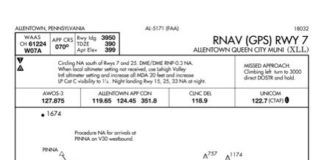Back in 2018, the FAA expanded our ability to use training devices to maintain instrument currency. Incomprehensible distinctions between aircraft and various types of simulators were removed. Rated pilots may log currency tasks without an instructor. An increased market for training devices and their increased use—often by pilots who logged little or no device time in the past—was predictable and beneficial. Let’s walk through a simulator exercise for currency and see how we might log it.
In “The Box”
Let’s hop into a Redbird FMX to fly two approaches for currency. We normally fly a fixed-prop, fixed-gear Cherokee so we’ll use the FMX in Cessna 172 mode. Choosing an unfamiliar area lets us work on our chart reading and briefing skills, so we start with the RNAV(GPS) to Runway 3 at Vermilion Regional Airport in Danville, Illinois (KDNV). Start in the air and approach from the southeast, using JAZZY for our initial approach fix. We fly the missed approach to the hold at COSMA. While holding, we set up for our nearby “alternate,” the ILS 32R at Champaign (KCMI), which we fly to a landing. The FMX Hobbs records 0.9 hours. All but 0.1 was in virtual instrument conditions.
How should we log the flight for instrument currency? My training device introduction was in 1993. Reviewing my logbook, almost every instructor I flew with logged things differently. Even under today’s standards, most were correct from a regulatory standpoint. While there are a number of things to stay away from, there is more than one right way, especially given the limitations of standard paper logbooks. Rather than claim the one and only right way, our goal is to propose a simple minimalist logging strategy that covers the bases. Along the way we’ll point out entries that can cause problems.
Aircraft vs. Device
The rules for using simulation come from a variety of sources. Some basic definitions appear in Sections 1.1 and 61.1 of the regulations in Title 14 of the Code of Federal Regulations.
An aircraft is a “device that is used or intended to be used for flight in the air.”
Flight time is “pilot time that commences when an aircraft moves under its own power for the purpose of flight and ends when the aircraft comes to rest after landing.”
There are three general types of approved training devices.
A full flight simulator (FFS) is a “replica of a specific type; or make, model, and series aircraft cockpit.” It’s a duplicate of the real thing, able to simulate everything the real airplane can do on the ground and in the air.
A flight training device (FTD) is a “replica of aircraft instruments, equipment, panels, and controls in an open flight deck area or an enclosed aircraft cockpit.” It duplicates a set of aircraft rather than being make and model specific.
An aviation training device (ATD) is a “training device, other than a full flight simulator or flight training device.” ATDs are further broken down into basic (BATD) and advanced (AATD).
Part 60 of the regulations is the lead for FFS and FTD qualification. The ATDs most of us in the light-piston GA world will encounter aren’t the subject of direct regulation. Rather they are the subject of AC 61-136, FAA Approval of Aviation Training Devices and Their Use for Training and Experience under a general grant of authority in §61.4(c) to approve training devices other than FFS and FTD.
The only significant distinction among them for logging purposes is ensuring that we only log activities the device is approved for. With an ATD, it is essential to read the FAA’s Letter of Authorization (LOA) for the device.
Instrument Currency
Instrument currency is governed by §61.57(c). Unless we lose currency long enough to require an IPC, we can maintain or regain currency by performing six instrument approaches, holding procedures, and intercepting and tracking courses using electronic navigation systems within the six calendar months preceding the month of an IFR flight. We may accomplish these tasks in any combination of aircraft and training devices representing the appropriate aircraft category. If our rating is “Instrument Airplane” our device can represent either a single or multi-engine airplane, but not a helicopter. We might be interested in class (single vs. multi) too, but for reasons other than instrument currency.
The tasks must be accomplished in actual or simulated instrument conditions. In an aircraft, simulated means with a view limiting device and safety pilot. In a training device, we set our weather so that we are operating solely by reference to instruments at least from the FAF to the MDA or DA (See Logging Instrument Approach Procedures, FAA InFO 15012).
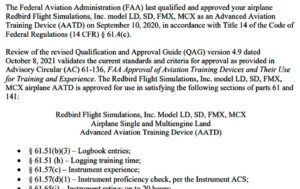
Logging
Paper logbooks were mainly designed for aircraft. Perhaps there’s a ground-device column but little else. “Flight time” only takes place in an “aircraft,” but without suitable columns, we use what we have. We might need some arithmetic to calculate totals for IACRA, insurance, and other requests. It’s a bookkeeping and data presentation issue.
The starting point for logging time is §61.51. Section 61.51(b) lists what must be included in any logbook entry; §61.51(g) provides detail for logging instrument time. Let’s enter today’s accomplishments in a standard paper logbook. We will examine some items individually, but the essentials are (1) the date, (2) a description of the device, (3) the time we spent, and (4) the tasks we accomplished.
Sections 61.51(b)(1)(iv) and 61.51(g)(5) require us to describe the training device used. I use the make/model and ident columns (in either order) to show we used a Redbird FMX ATD in Cessna 172 mode. It’s not really a Cessna 172 and we don’t really care about class so “ATD-ASEL” or “ATD-Airplane” probably suffice, but I think this does the overall job better. If the device you are using has a serial or other identification number, you might use it, but the two essentials are what the device is and what category aircraft it emulates.
Section 61.51(b)(iii) requires the “aircraft’s” departure and arrival locations. We are not in an aircraft; we never left the building. If we start in the air and end on the missed, we don’t have a departure or destination. So I think the route is optional in a device. Many pilots just leave it blank. Others put something in for reference, as we have done here. Pick what works for you.
Leave the aircraft category/class information blank. Time in a device is not time in any aircraft category, class, make, or model. The problem isn’t the line item. It’s the totals—the bookkeeping problem. If we include the device, the totals are wrong. There are workarounds, but they all seem to involve too much work for too little benefit. The ground-trainer column is where we record the time in simulated flight.
The same is true for most of the type of pilot and flight condition categories. We are not PIC or SIC in a device sitting on the ground. No matter how far we go or how many places we land, it’s not a cross country under any FAA definition. With exceptions for some higher end FFS and FTD, it’s not countable as “night” flight. And it’s definitely not actual instrument conditions. Leave them blank.
We are doing this solo, so no dual is received. If there is an instructor, §61.51(b)(2)(v) directs us to record training received, whether it be “in a full flight simulator, flight training device, or aviation training device.” Without a separate column, our lesson belongs here; just handle bookkeeping problems when they arise. And unless we happen to be using a FFS or FTD that is specifically approved for logging landings, we leave simulated crash landings blank.
What about “total time”? The title of the column varies by publisher. A better choice is to leave this column dedicated to total flight time—in an aircraft. There’s no good reason to lump aircraft and devices together just to separate them every time someone asks how much flight time you have.

Simulated Instrument
We left the best for last. Section 61.57(c) requires currency tasks be performed in actual or simulated instrument conditions. The FAA use of “simulated instrument conditions” applies to both aircraft and ground devices. The flight/device bookkeeping issue is obvious and cries out for a workaround. Given the limited use of the data for anything other than currency, many just don’t worry about separating them, as shown. For those who want to separate them but do not have an empty column, there is an alternative. Unless there is a reason to do otherwise, dedicate the existing “simulated instrument” column to hood time. Only the simulated instrument time in the device goes in the ground-trainer column. In our sample entry, leave the simulated instrument column blank and write 0.8 rather than 0.9 in the ground-trainer column.
Record the “content” of our session under Remarks. There’s really no aircraft/device difference here. At a minimum, it’s the §61.57(c) currency tasks. The performance of holding procedures, interception and tracking, and the “location and type of each instrument approach” required by §61.51(g)(3)(i). I recommend also identifying the fixes where you held. And yes, “interception and tracking of navigation courses” should be implicit when performing approaches and holds, but it’s specifically mentioned in the regulation and the FAA can be a little obsessive about inferring satisfaction of requirements. I wrote it out longhand for the sample, but in my logbook, I abbreviate it ITNC. Extra comments are up to you.
There are variations, but the entries suggested here cover currency and meet the language of the applicable regulations. Just remember those bookkeeping issues when you hand out totals.
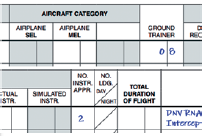
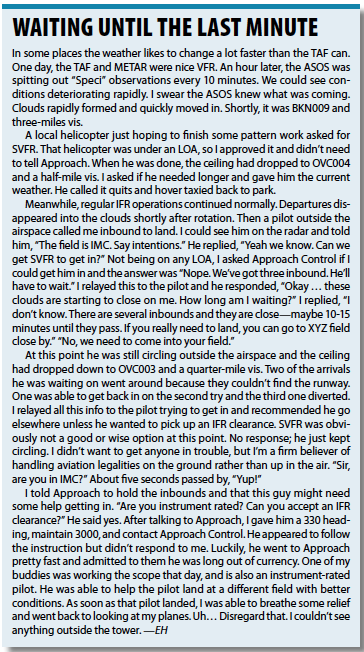
Digital Logbooks
Electronic logbooks have some advantages. When we add an aircraft or device, the entry includes its characteristics. The logbook “knows” a Cessna 180 is a high performance tailwheel airplane with flaps and a controllable propeller and uses that information to generate totals, currency, and reports. Add a training device and a digital logbook can separate simulated device time from simulated aircraft time. We end up using fewer “columns” (fields) and wipe out most bookkeeping issues.
A full discussion of digital logbooks is beyond the scope of this article. But two popular logbooks, the one in ForeFlight Mobile and the free online and mobile MyFlightbook, recommend the basic template we discussed here. Define the device as a FFS, FTD or ATD, but one that emulates an aircraft so we can track category and class information and separate “flight time” from trainer time. Just as we do on paper.
CFI and (mostly) retired aviation lawyer Mark Kolber reminds pilots that logging for currency and logging for proficiency are two different things.

